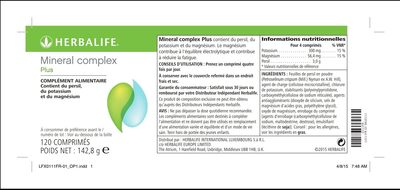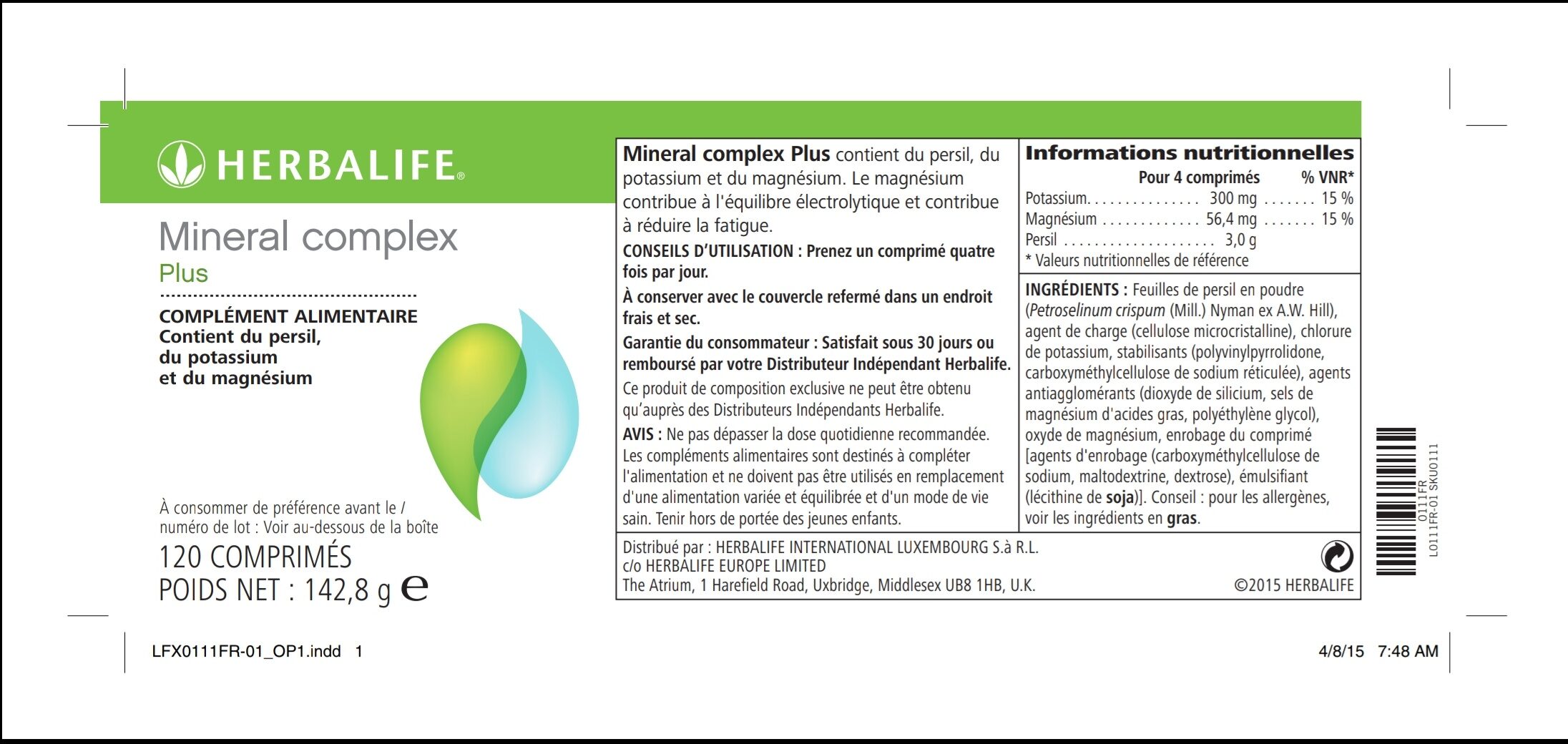Mineral complex Plus - Herbalife - 142,8g
Aquesta pàgina del producte no està completa. Podeu ajudar a completar-la editant-la i afegint-hi més dades a partir de les fotos ja disponibles, o fent-ne més amb l'aplicació de androide o iPhone / iPad. Gràcies!
×
Nom comú: COMPLÉMENT ALIMENTAIRE Contient du persil, du potassium et du magnésium
Quantitat: 142,8g
Empaquetament: fr:Comprimés
Marques: Herbalife
Categories: Suplements dietètics
Origen dels ingredients: Europa, fr:Argentina - Español, fr:Armenia - Pyсский, fr:Aruba - Español, fr:Asia Pacific, fr:Australia - English, fr:Austria - Deutsch, fr:Azerbaijan - Русский, fr:Belarus - Pyсский, fr:Belgium - Français, fr:Belgium - Nederlands, fr:Bolivia - Español, fr:Bosnia i Hercegovina - Bosnian, fr:Botswana - English, fr:Brazil - Português, fr:Bulgaria - български, fr:Cambodia - English, fr:Cambodia - ភាសាខ្មែរ, fr:Canada - English, fr:Canada - Français, fr:Chile - Español, fr:China - 中文, fr:Colombia - Español, fr:Costa Rica - Español, fr:Croatia - Hrvatski, fr:Cyprus - Ελληνικά, fr:Czech Republic - Čeština, fr:Denmark - Dansk, fr:Ecuador - Español, fr:El Salvador - Español, fr:Estonia - Eesti, fr:Finland - Suomi, fr:France - Français, fr:Georgia - ქართული, fr:Germany - Deutsch, fr:Ghana - English, fr:Greece - Ελληνικά, fr:Guatemala - Español, fr:Honduras - Español, fr:Hong Kong - 粵語, fr:Hungary - Magyar, fr:Iceland - Íslenska, fr:India - English, fr:Indonesia - Bahasa Indonesia, fr:Ireland - English, fr:Israel - עברית, fr:Italy - Italiano, fr:Jamaica - English, fr:Japan - 日本語, fr:Kazakhstan - Pyсский, fr:Korea - 한국어, fr:Kyrgyzstan - Русский, fr:Latvia - Latviešu, fr:Lebanon - English, fr:Lesotho - English, fr:Lithuania - lietuvių, fr:Macau - 中文, fr:Malaysia - Bahasa Melayu, fr:Malaysia - English, fr:Malaysia - 中文, fr:Mexico - Español, fr:Middle East & Africa, fr:Moldova - Român, fr:Mongolia - Монгол хэл, fr:Namibia - English, fr:Netherlands - Nederlands, fr:New Zealand - English, fr:Nicaragua - Español, fr:North Macedonia - македонски јазик, fr:Norway - Norsk, fr:Panamá - Español, fr:Paraguay - Español, fr:Perú - Español, fr:Philippines - English, fr:Poland - Polski, fr:Portugal - Português, fr:Puerto Rico - Español, fr:República Dominicana - Español, fr:Romania - Română, fr:Russia - Русский, fr:Serbia - Srpski, fr:Singapore - English, fr:Slovak Republic - Slovenčina, fr:Slovenia - Slovene, fr:South Africa -English, fr:Spain - Español, fr:Swaziland - English, fr:Sweden - Svenska, fr:Switzerland - Deutsch, fr:Switzerland - Français, fr:Taiwan - 中文, fr:Thailand - ไทย, fr:Trinidad & Tobago - English, fr:Turkey - Türkçe, fr:Ukraine - Yкраї́нська, fr:United Kingdom - English, fr:United States - English, fr:United States - Español, fr:Uruguay - Español, fr:Venezuela - Español, fr:Vietnam - Tiếng Việt, fr:Zambia - English
Codi de traçabilitat: CE
Matching with your preferences
Salut
Ingredients
Processament d'aliments
Additius
Anàlisi dels ingredients
Nutrició
Entorn
Empaquetament
Transport
Report a problem
Fonts de dades
Producte afegit per bricecrv45-gmail-com
Última modificació de la pàgina del producte per tacite-mass-editor.
La pàgina del producte, també editada per 1billion, 1billioncomsrls, 1billioncomsrls2, ecoscore-impact-estimator, foodonline, stephaniefood, stephanieincsellherbalife, thaialagata.




